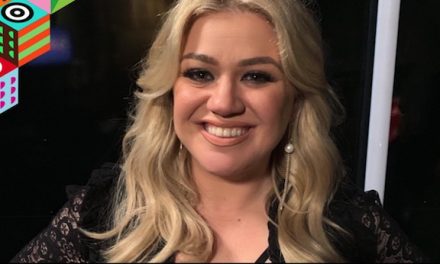
By Karen B. Kurtz
Photos by Mark A. Kurtz
After two decades of designing paper dolls, Kwei-lin Lum threw out conventional rules and began to challenge the boundaries. Her unique artwork reflects an ever-changing sequence of new explorations across varied design challenges, eye-catching color, and unconstrained style. Unconventional art mediums tell Lum’s paper doll stories.
Crazy Fantasy Paper Dolls, for example, has two paper dolls: Irmaa and The Other Irmaa. Irmaa has flowy body decorations; The Other Irmaa wears bold black-and-white geometric patterns. Fashions and accessories include, but are not limited to, a dress decorated with an antique French map of the Western Hemisphere, a witch’s crazy-quilt lightning robe, Humphty and his companion Upside Down, homages to Yves Saint Laurent and Pablo Picasso, and a conjoined dress named Blue-Moo Cow-Cola. Crazy fun!
Lum drew her first paper doll during her freshman year at the University of California, Berkeley. She earned a master’s degree in plant biology and worked for the Social Security Administration for 35 years, quietly producing artwork on the side. When software and production requirements overtook Lum’s white-collar career, Intuition said it was time to play her art card.
“Artwork cleaves to my personal experiences and covers a broad variety of realms,” she said. “I’ve spent most of my life reconciling different strains and fitting in.”
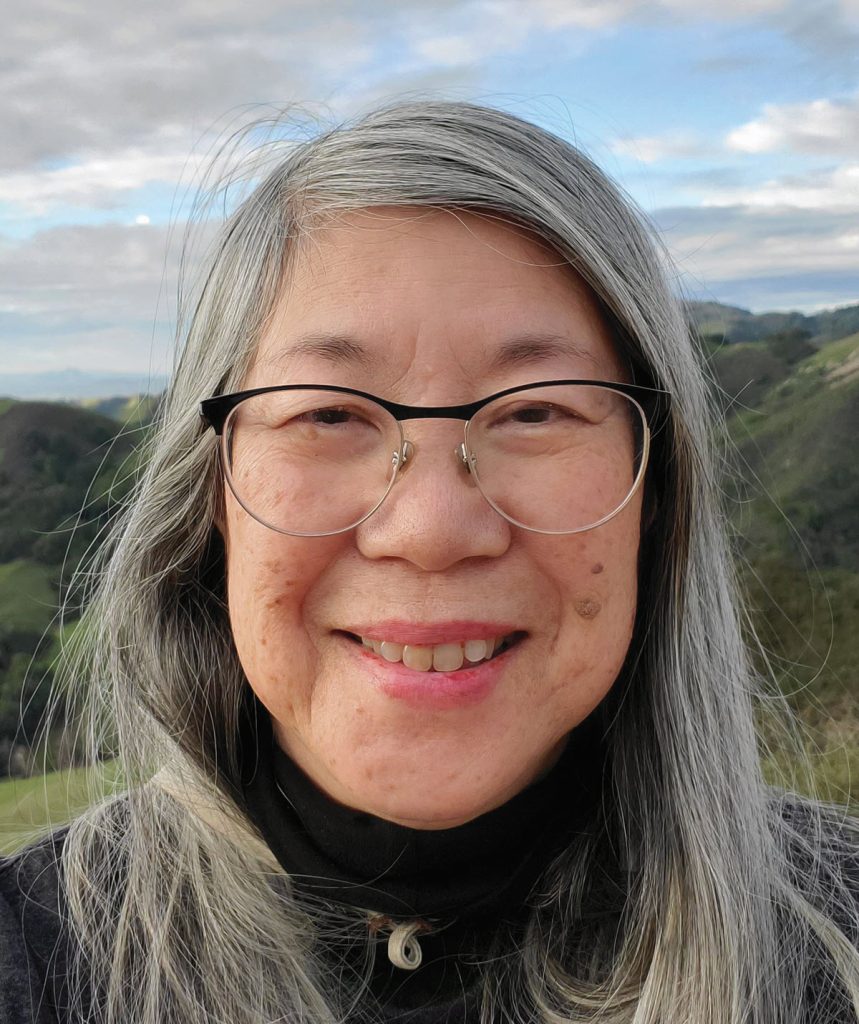
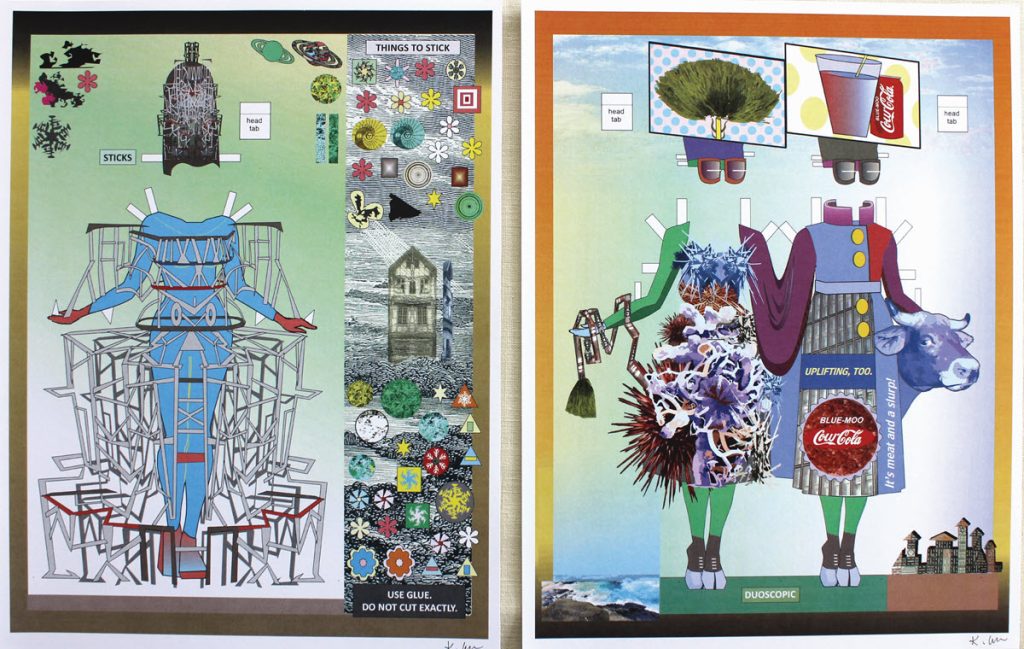
Dover Publications
Lum was encouraged early on by the late paper doll promoters Deanna Williams, Agnes Garr, and Gene Maiden. Soon she met Marjorie Sarnat, a commercial and fine artist who designs paper dolls, at an ephemera show. Years later, paper doll convention organizer Linda Ocasio created an opportunity to submit to Dover Publications, an international company headquartered in Mineola, New York.
“Dover gave me a huge break when they bought my Day of the Dead Paper Dolls and made supplementary postcards from my artwork, but it was the scariest thing to happen to me! Even scarier than getting cancer and losing a beloved family member! Living up to that wormhole experience is still my driving force today,” Lum said.
“I have always loved antique scientific illustrations,” she continued, “with objects arranged on a page and blank spaces between. Paper dolls live in that same space of flattened three-dimensional experiences with spread-out parts. I grew as an artist because important paper doll groups provided an audience for my first work. Wonderful friendships emerged that still endure today.”
Growing Up in Honolulu
Lum’s artistic Chinese American family combined old-school values with modern life. “My extroverted father owned a printing company and my mother owned a retail store in Waikiki — an outlet for my father’s greeting card line,” she said. “Mother instilled the value of judging good taste. My large extended family taught lessons in Asian American identity.
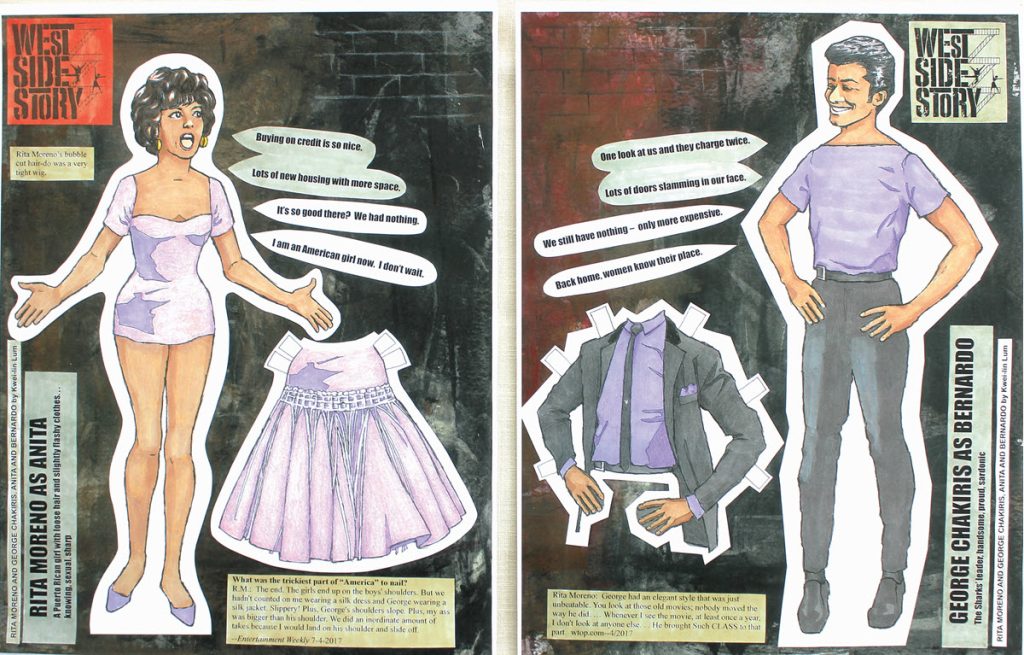
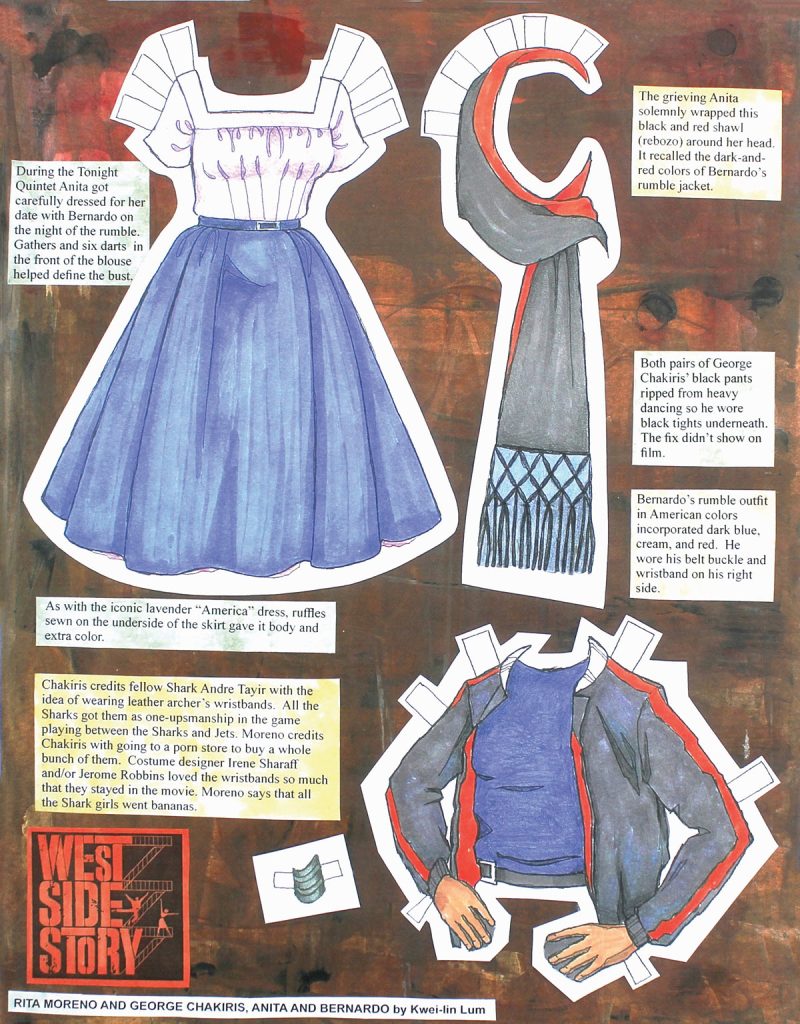
“I enjoyed looking at greeting card catalogs and samples that Mother brought home from the store, flipping pages to reveal new items. Some of the card styles were carefully rendered and Renaissance-like, some were cartoony and contemporary.
“I identify with the movie West Side Story because it handled immigrant issues within a broader American society,” Lum said. “I felt like I came from an immigrant family. Grandmother could barely speak English and was illiterate like other women in her generation. My Asian immigrant experience eventually found its way into Chinatown Paper Dolls and Lily and Masako in Prints.”
Chinatown Paper Dolls
“Chinatown was very challenging,” Lum said. “Beyond a literal interpretation of actual historical events, it is the story of often-misunderstood communities. My personal authenticity was essential.”
Chinatown is set against a striking lunar New Year parade. A bustling enclave unfolds inside the paper doll book with Lum Mun Kong’s General Store backdrop, five paper dolls, everyday clothing, and accessories. History’s fashion sweep includes a 19th century male working-class city dweller and a vegetable vendor; a prosperous businessman and his wife with tiny, bound feet; parents with children; elderly Cantonese shopkeepers; a sophisticated couple toasting with champagne; a dramatic Fu Manchu “evil genius” stereotype; a nightclub showgirl; and a warrior woman in a Chinese opera. Lum’s 20th century Western-style fashions depict a seamstress from the garment industry, a woman burning incense in the Buddhist temple, a 1940s woman selling war bonds, a butcher with a roasted duck, a 1960s Miss Chinatown, a 1970s protester, and a 1990s wedding. Additionally, Lum depicts a 21st century shopper buying worldwide products, a young career woman, and a contemporary woman working out at the gym before work. Chinatown deftly returns to the jubilant New Year celebration with a lion costume.
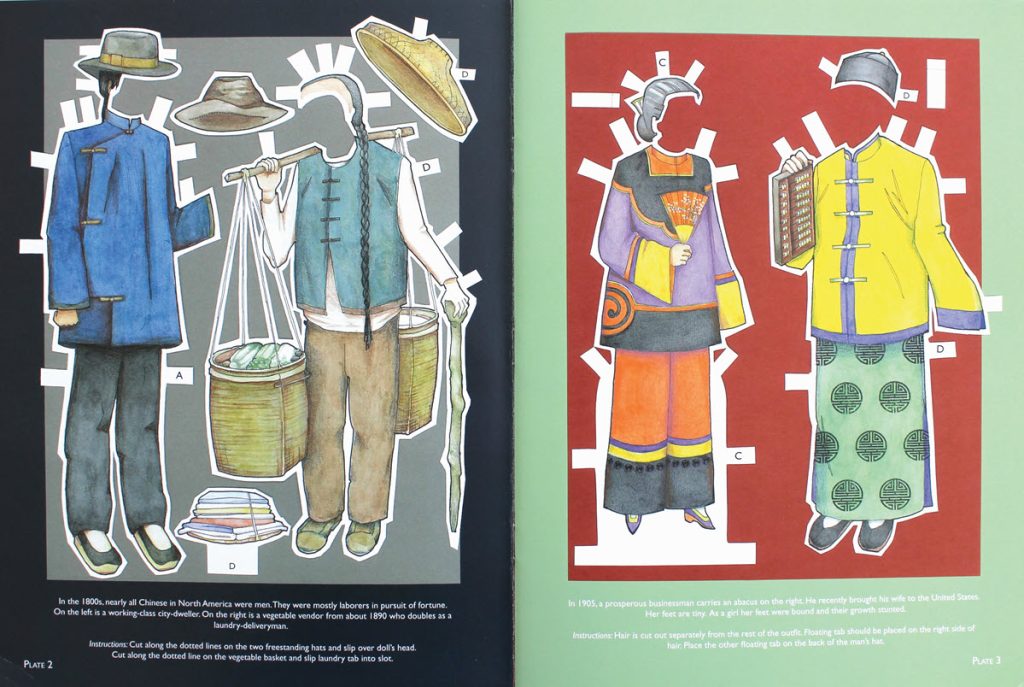
Have a website login already? Log in and start reading now.
Never created a website login before? Find your Customer Number (it’s on your mailing label) and register here.
JOIN HERE
Still have questions? Contact us here.

